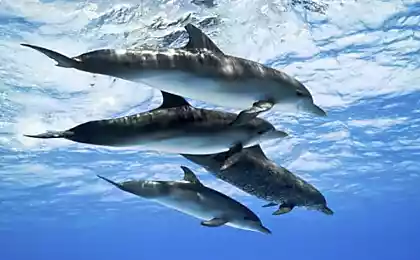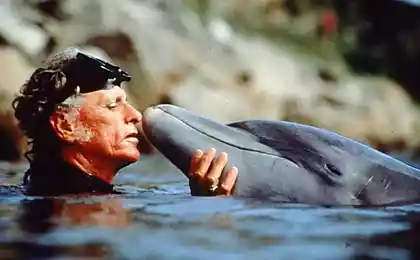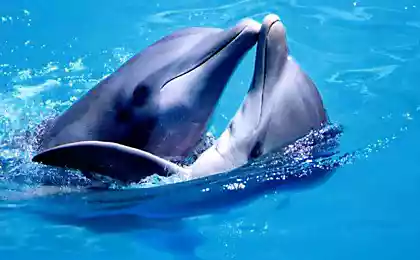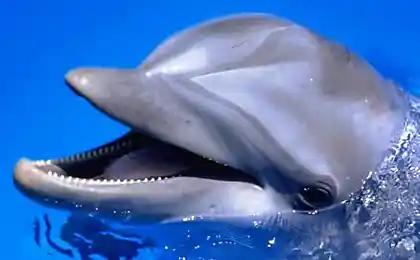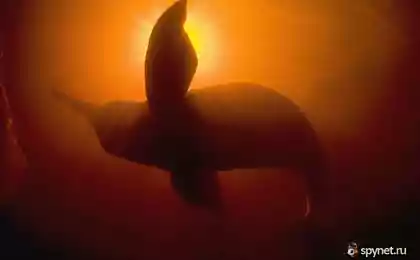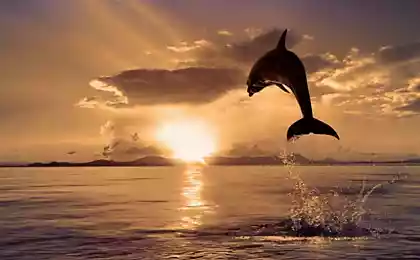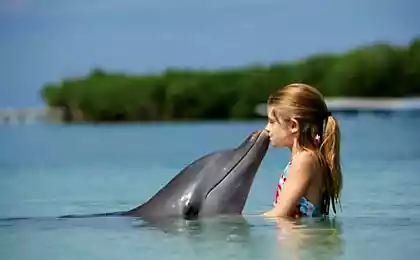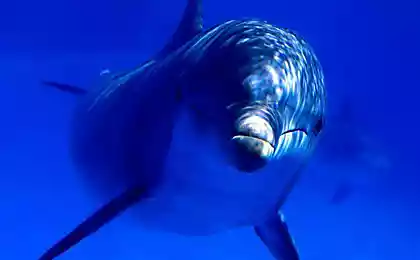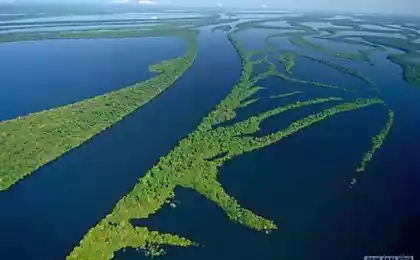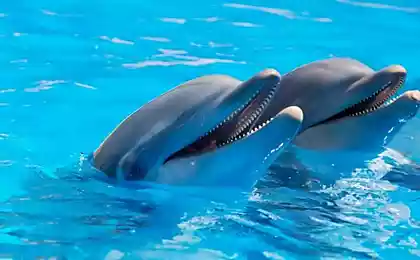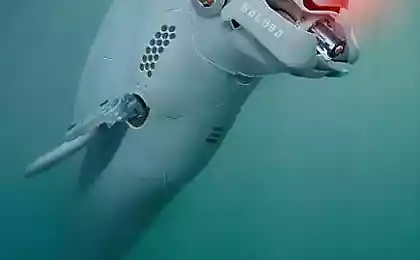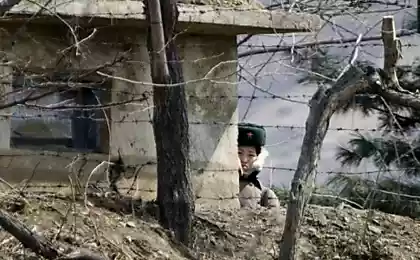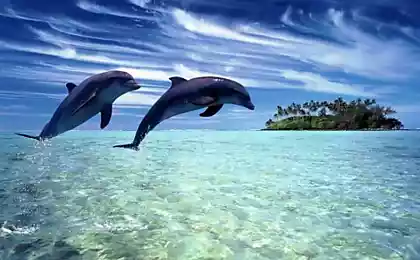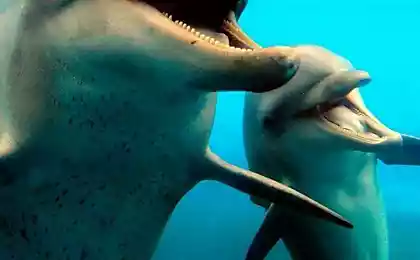1108
Amazon River Dolphins
Amazon River Dolphin, which is also called iniey or Boat, the largest river dolphin. Inia geoffrensis, as the scientists call it, reaches 2, 5 m in length and weight of 2 kilograms. Light gray juveniles age lighter. The body of the Amazon River Dolphin complete, with a thin tail and narrow muzzle. Round forehead slightly curved beak and small eyes - features of the species of dolphins.
9 ph via ru_animals
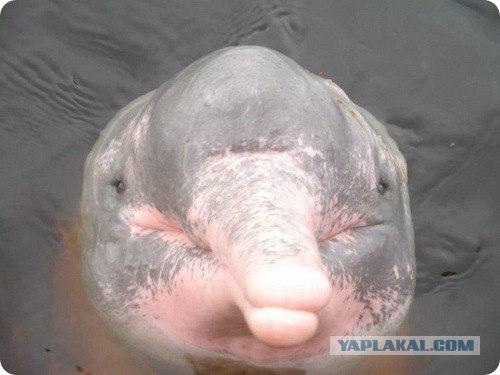
Amazon River Dolphin is found in the rivers and lakes of South America. In accordance with the distribution area, the researchers divided the form into three subspecies: Inia geoffrensis geoffrensis, Inia geoffrensis boliviensis and Inia geoffrensis humboldtiana.
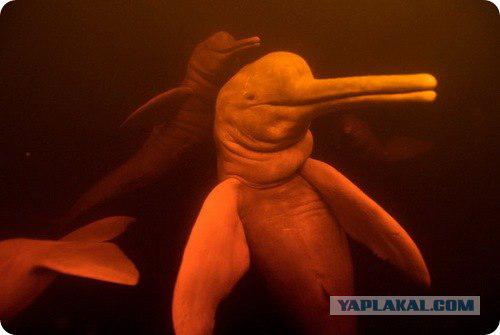
Amazon dolphins live around the Amazon basin, even in small rivers and lakes. Usually they do not change the place of residence, except for seasonal migration. When the river level falls water inii looking for a deeper channel. If the river overflows, the dolphins can move to the flooded plains. In the rainy season the Amazonian dolphins are able to swim across the channel from one river basin to another.
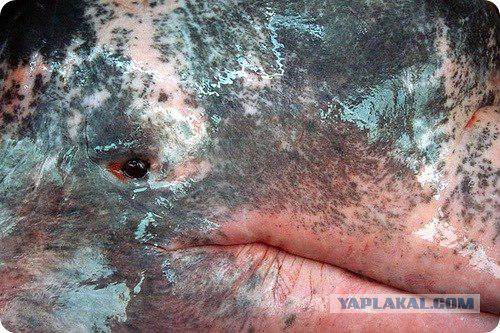
These dolphins do not form groups. Suffice it is rare to see a flock of several dolphins, it is only during the breeding season. Since they do not form groups, and they do not have a hierarchy. Inii lead an active life both day and night. Compared with other dolphins, the float at a lower speed 3km / h on average. The maximum speed of the Amazon dolphin - 22 km / h. They can dive and stay under water for up to 2 minutes. When sailing inii maneuver perfectly.
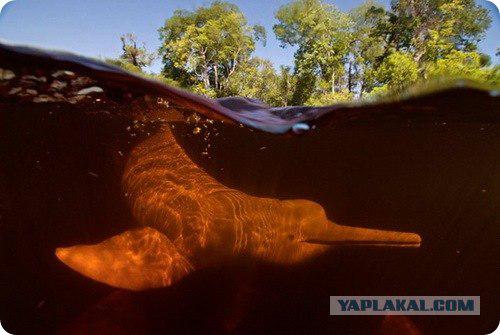
Amazon dolphins feed on small fish per day can eat up to 12 kg of food. They eat different kinds of fish, and the structural features of the jaws allow feast on turtles and crabs.
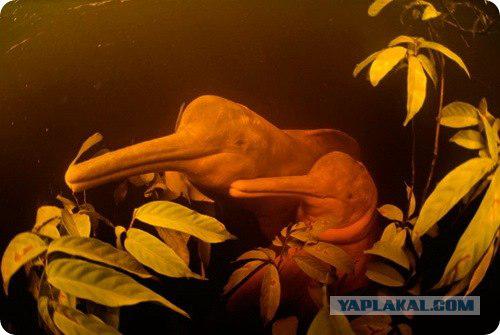
Hunt Amazonian dolphins near the shore, near the mouths of rivers or near waterfalls. In these places, water is quite muddy and the fish does not have time to escape from the hunter. In addition, the Dolphins get food from the bottom, digging it out of the mud, kidnapped fish from fishing nets. Sometimes the Amazon River Dolphin goes hunting together with the giant otter and dolphin species tukashi. While seeing dolphins good at hunting, they rely on the hearing, as well as the sense of touch, using the method of echolocation.
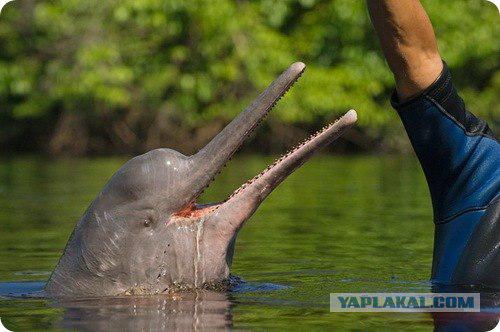
Living in nature Amazonian dolphins love to play and curiosity are the surroundings. They do not abandon their relatives in distress, such as the wounded. Not afraid to approach the boats. These dolphins can be tamed, but you can not train. In captivity, they become aggressive, so they do not keep in oceanariums
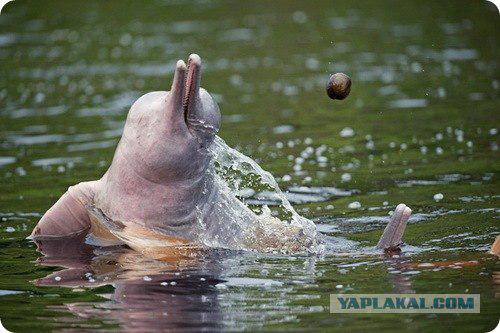
Scientists have not fully explored the nature of reproduction iny. There is only speculation that males enter the battle for the female. After the birth of a baby female long stays with him in shallow water, where it is easier to come to the surface to breathe. In addition, it is easier to get food and no dangerous predators. The calf is fed mother's milk to one year, but stays with her longer, until about three years. Puberty Amazon River Dolphin comes five years. Total prodolzhitelnos iny life is unknown in captivity, they can not withstand more than 33 months.
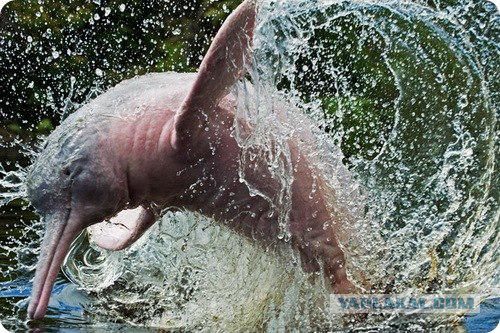
The man does not hunt for the Amazonian dolphins. However, some fishermen kill these animals because of damage to fishing nets. Laws of the Latin American countries is prohibited or restricted trapping Amazon River Dolphin. Despite the deterioration of the environment, the size of the Amazon dolphin is not reduced.
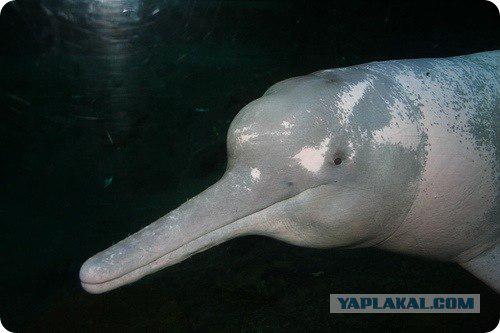
Source:
9 ph via ru_animals

Amazon River Dolphin is found in the rivers and lakes of South America. In accordance with the distribution area, the researchers divided the form into three subspecies: Inia geoffrensis geoffrensis, Inia geoffrensis boliviensis and Inia geoffrensis humboldtiana.

Amazon dolphins live around the Amazon basin, even in small rivers and lakes. Usually they do not change the place of residence, except for seasonal migration. When the river level falls water inii looking for a deeper channel. If the river overflows, the dolphins can move to the flooded plains. In the rainy season the Amazonian dolphins are able to swim across the channel from one river basin to another.

These dolphins do not form groups. Suffice it is rare to see a flock of several dolphins, it is only during the breeding season. Since they do not form groups, and they do not have a hierarchy. Inii lead an active life both day and night. Compared with other dolphins, the float at a lower speed 3km / h on average. The maximum speed of the Amazon dolphin - 22 km / h. They can dive and stay under water for up to 2 minutes. When sailing inii maneuver perfectly.

Amazon dolphins feed on small fish per day can eat up to 12 kg of food. They eat different kinds of fish, and the structural features of the jaws allow feast on turtles and crabs.

Hunt Amazonian dolphins near the shore, near the mouths of rivers or near waterfalls. In these places, water is quite muddy and the fish does not have time to escape from the hunter. In addition, the Dolphins get food from the bottom, digging it out of the mud, kidnapped fish from fishing nets. Sometimes the Amazon River Dolphin goes hunting together with the giant otter and dolphin species tukashi. While seeing dolphins good at hunting, they rely on the hearing, as well as the sense of touch, using the method of echolocation.

Living in nature Amazonian dolphins love to play and curiosity are the surroundings. They do not abandon their relatives in distress, such as the wounded. Not afraid to approach the boats. These dolphins can be tamed, but you can not train. In captivity, they become aggressive, so they do not keep in oceanariums

Scientists have not fully explored the nature of reproduction iny. There is only speculation that males enter the battle for the female. After the birth of a baby female long stays with him in shallow water, where it is easier to come to the surface to breathe. In addition, it is easier to get food and no dangerous predators. The calf is fed mother's milk to one year, but stays with her longer, until about three years. Puberty Amazon River Dolphin comes five years. Total prodolzhitelnos iny life is unknown in captivity, they can not withstand more than 33 months.

The man does not hunt for the Amazonian dolphins. However, some fishermen kill these animals because of damage to fishing nets. Laws of the Latin American countries is prohibited or restricted trapping Amazon River Dolphin. Despite the deterioration of the environment, the size of the Amazon dolphin is not reduced.

Source:



